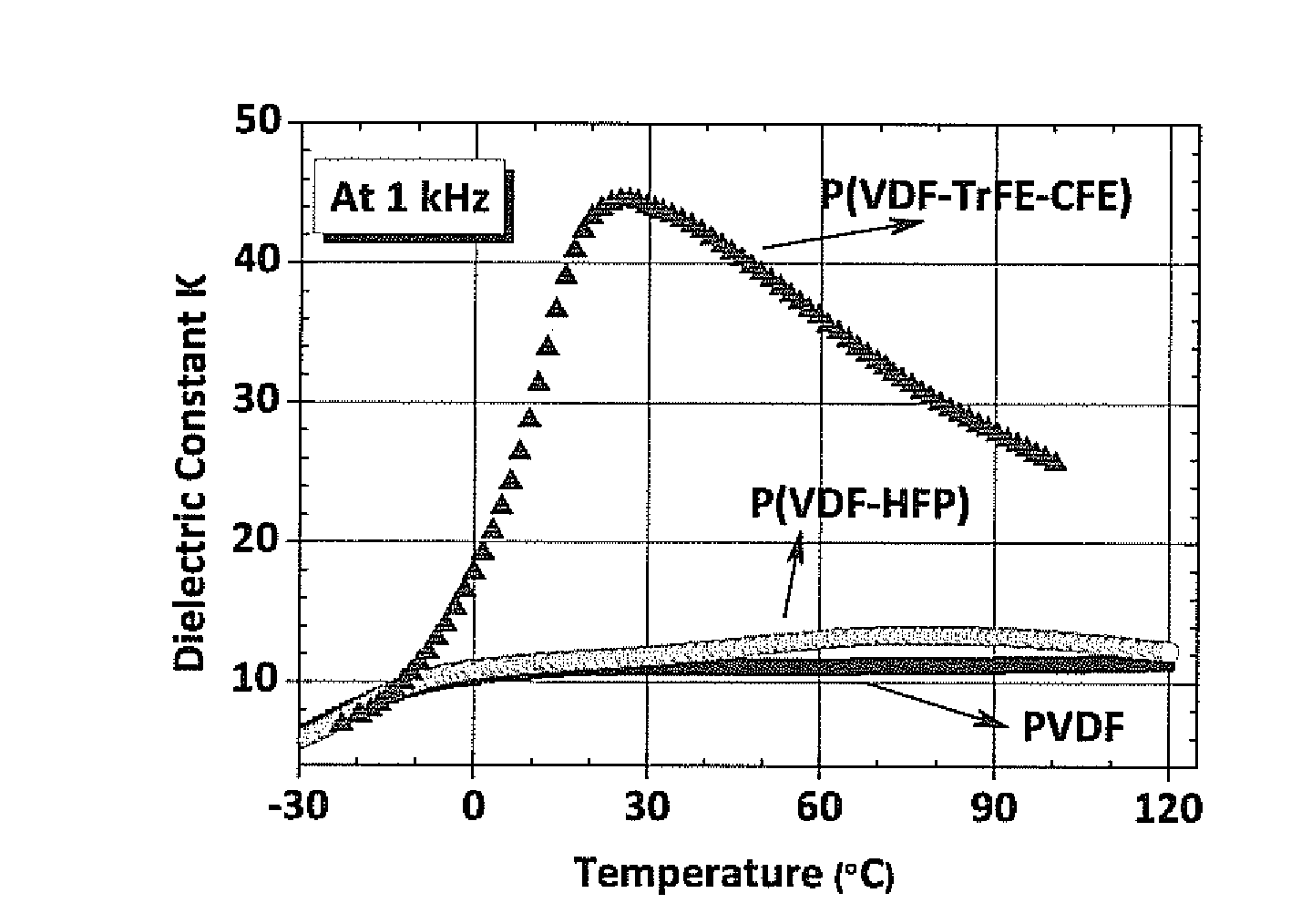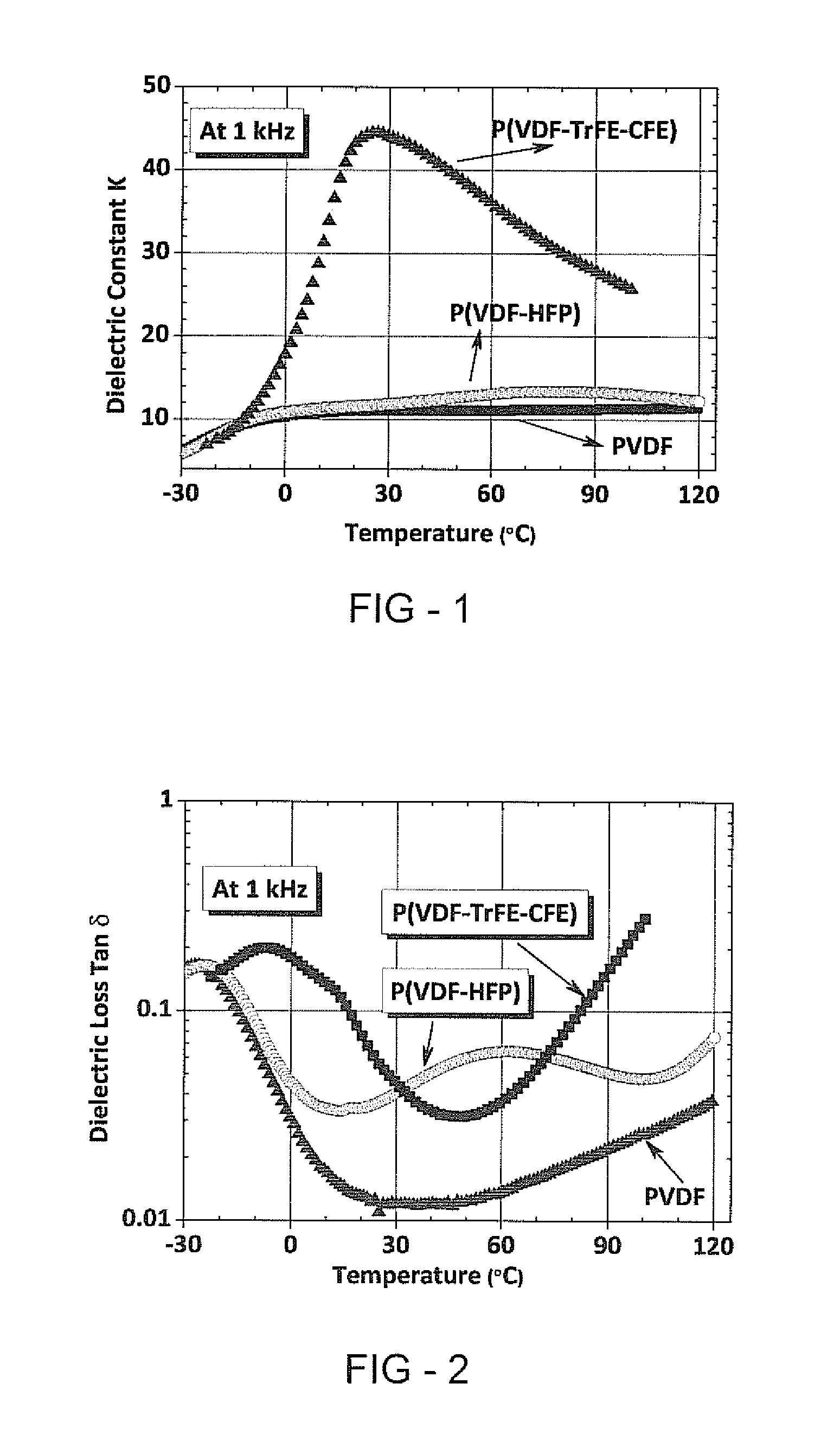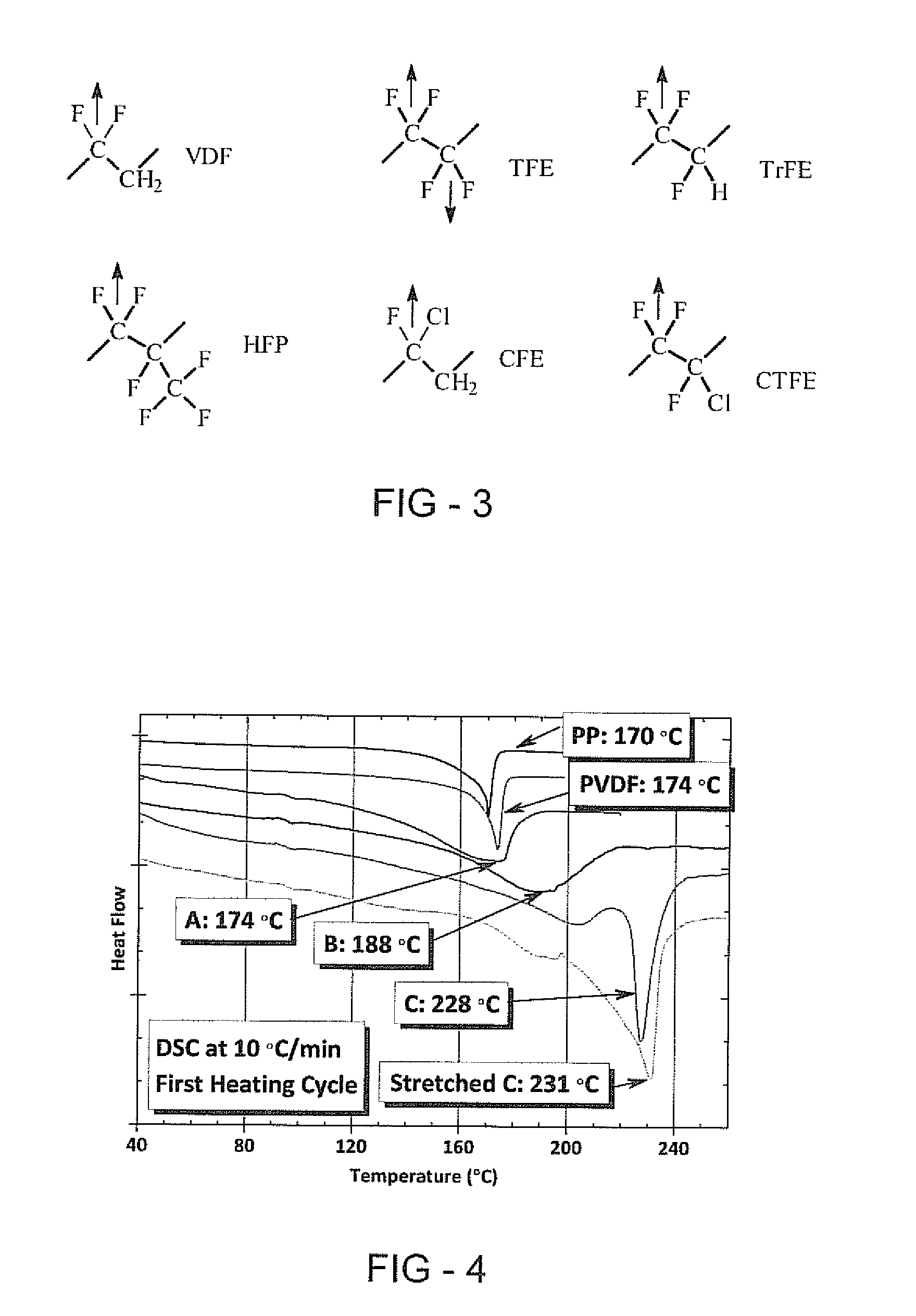[0015]An example device includes a
dielectric layer (such as a
polymer film) including a
copolymer which has at least two different components, such as different monomer components copolymerized to obtain the
copolymer. A first component may be
tetrafluoroethylene (TFE), the presence of which allows remarkable high temperature stability, and excellent electrical properties such as high
electric resistivity and low
dielectric loss tangent to be obtained. A second component may be an unsaturated halogenated (e.g. perfluorovinyl) monomer with a large
dipole moment, for example above 1.0
Debye. Examples include vinylidene
fluoride (VDF), trifluoroethylene (TrFE),
vinyl fluoride (VF), 1-chloro-1-fluoroetheylene (CFE), or other monomers. The second components have strong
dipole moment and provide high dielectric constant.
[0020]A copolymer may include an optional third component, including monomers larger in size (bulkier) than vinylidene
fluoride (VDF), which may increase the flexibility and melt-
processing capability of the copolymer. An example copolymer may include approximately equal to or less than 20% by weight of a third component. For example, a copolymer may include a third component as 1% to 20% by weight. The third component may comprise one or more monomers selected from the group consisting of
hexafluoropropylene (HFP),
chlorotrifluoroethylene (CTFE), and unsaturated perfluorovinyl ethers with the formula CF2═CF—ORf, where Rf is a perfluoroalkyl having 1 to 8 carbon atoms, or some combination thereof. Other monomers may also be used to achieve the same objective. Such third components can be included to destroy the regularity of the crystalline phase in the copolymer, and introduce mechanical flexibility and the capability to produce the
dielectric layer using melt-based processes.
[0022]The inclusion of
tetrafluoroethylene monomers into e.g. PVDF-based copolymer is counter-intuitive for
energy storage applications, as tetrafluoroethylene has a very low
dipole moment. Polymers and copolymers of fluorinated vinyl monomers such as VDF are associated with a very high dipole moment, and with a
high energy density capability in thin film capacitors. The inclusion of tetrafluoroethylene monomers, particularly at concentrations above 50% by weight, in a copolymer appears to undermine the advantages of the highly polar component. However, the combination of VDF and other polar monomers with a non-polar component such as tetrafluoroethylene was found to give remarkably improved electrical properties.
[0026]Copolymers according to examples of the present invention have excellent electrical properties, such as one or more of the following attributes. Coolymers described herein allow
capacitor operation with a
dielectric loss tangent (tan δ) lower than 2% at 1 kHz from −25° C. to 125° C. The copolymer may have a dielectric constant above 4.0 at 1 kHz at temperatures from −25° C. to 85° C. Examples of the present invention provide a copolymer having a volume resistivity above 1015 Ω·cm at 25° C., and above 1013 Ω·cm at 125° C. The
dielectric layer may have a charge-
discharge efficiency higher than 90% at 400 MV / m
electric field. Examples of the present invention allow a dielectric layer to have a DC
dielectric breakdown strength above 500 MV / m at 25° C.
[0033]Examples of the present invention include polymer film capacitors in which the dielectric layer is a polymer film including a copolymer as described herein. A
film capacitor may include one or more metallized dielectric
layers, alternating dielectric
layers and
metal foils, or a
hybrid metallized film and foil construction. Examples of the present invention further include a
pulsed power apparatus including a polymer
film capacitor as described herein, and power inverters and power
converters including a
DC bus capacitor, the
DC bus capacitor being a thin film capacitor as described herein. Examples of the present invention also include a medical defibrillator including a thin film
polymer capacitor as described herein,
power management electronics (for example, in solar and wind energy), power inverters in electric vehicles, and dielectrics in microelectronic devices for storing, controlling, and manipulation of
electric charge,
electric energy, and
electric power with high efficiency.
 Login to View More
Login to View More  Login to View More
Login to View More 


